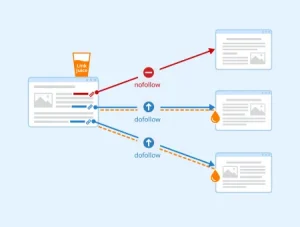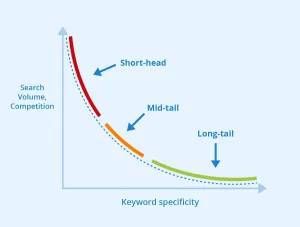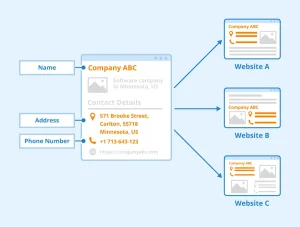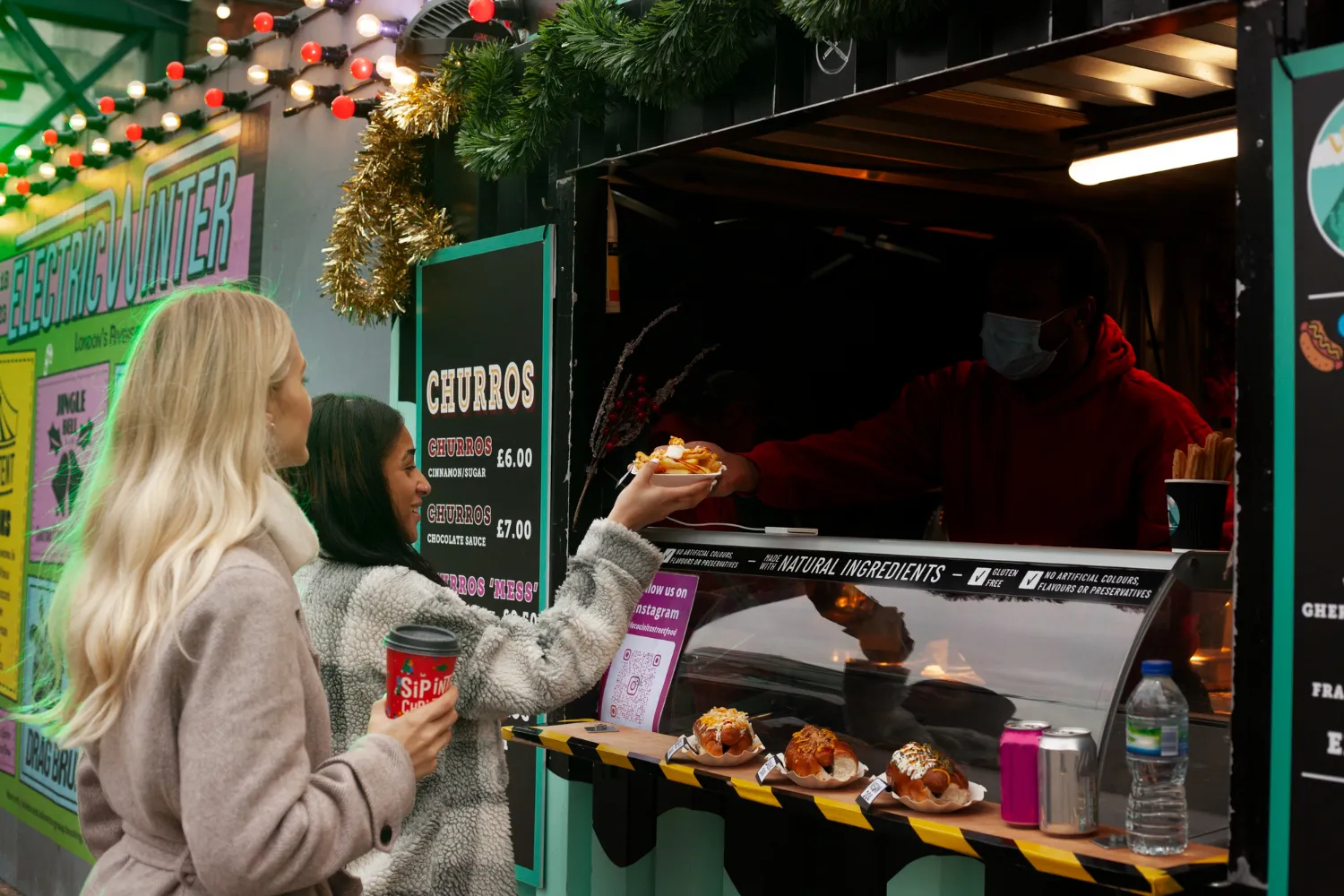In the digital age, having a strong online presence is essential for any restaurant that wants to stand out from the competition. Search Engine Optimization (SEO) is a key tool for attracting more customers through Google and other search engines. In this article, we will explore 20 key strategies that can help improve your restaurant’s visibility, rank higher in search results, and attract more diners.
What is SEO and Why is it Crucial for Restaurants?
SEO is the set of techniques used to improve a website’s ranking in the organic search results of search engines like Google. For restaurants, SEO is particularly important to appear in local searches, as most potential customers are looking for nearby options online. Properly optimizing your website, social media, and Google My Business profiles can be the difference between gaining a new customer or losing them to the competition.
For example, when someone searches “Mexican restaurant near me,” Google’s algorithm prioritizes businesses with optimized profiles and a strong local SEO strategy. To achieve this, your restaurant must meet certain criteria: have relevant keywords, updated profiles on major platforms, and technical optimizations that favor website indexing. The importance of SEO lies in being visible at key moments when the customer is ready to make a reservation or visit.
Good SEO positioning also builds trust among customers. People tend to trust restaurants that appear at the top of search results. Over time, this visibility can translate into a steady flow of customers, more reservations, and greater opportunities to stand out in a highly competitive industry. SEO not only helps attract new diners but also contributes to building a solid brand and a trustworthy online presence.
How SEO Helps Attract More Local Customers?
Local SEO is a key subdiscipline for restaurants, as most searches for this type of business have a geographic focus. Users specifically search for restaurants near their location, and Google prioritizes results closest to them. For example, a customer searching for “pizza in Madrid” will get results near their current position, and if your restaurant is properly optimized for local SEO, it will appear among the top results.
Optimizing your restaurant for local SEO ensures that potential customers can find you when they need you. Some actions include making sure your address is correctly listed in Google My Business, including the name of the city or neighborhood in your restaurant’s descriptions, and having customer reviews mention your location. Additionally, interacting with reviews and maintaining an active profile on local platforms like TripAdvisor can also help improve your visibility.
Local SEO also involves making sure your restaurant appears in local directories (here you have a list of these restaurant directories), like Yelp, Foursquare, and similar platforms. Having a presence on these platforms not only makes it easier for customers to find you but also increases your restaurant’s authority in terms of SEO. Additionally, using local keywords, such as the city name and the types of food you offer, is crucial to attract customers in your geographic area.
Finally, it’s important to remember that local SEO isn’t just about appearing on Google; it’s about creating a complete digital experience. This includes keeping your hours of operation, menus, and any current offers or promotions up to date. If a customer finds outdated or incorrect information, they might decide to look for another option, which will affect both the user experience and the performance of your long-term SEO strategy.
20 Key Strategies to Boost Your Restaurant’s Visibility and Attract More Diners
Improving your restaurant’s visibility in search results is essential for attracting more diners and staying ahead of the competition. With a mix of technical improvements, local SEO tactics, and engaging content, you can create a winning strategy to stand out online. In this section, we’ll dive into 20 actionable strategies that will help you rank higher, draw in more customers, and keep them coming back for more.
1. Mobile-Friendly Website Optimization
.jpg)
More than 60% of restaurant-related searches are done from mobile devices. If your website is not optimized for these devices, you will not only lose potential customers, but Google will also penalize your page in search results. A responsive design ensures that your website works properly on any screen size, providing a better user experience and thus improving your ranking in search engines.
To optimize your site, make sure the content adapts to any screen size, buttons are easy to click, and menus and calls to action are accessible. A fast, well-designed mobile site is crucial, especially when users are looking to make a last-minute reservation or check the menu before making a decision. Using tools like Google PageSpeed Insights will help you identify areas for improvement.
Moreover, Google has already implemented mobile-first indexing, meaning it evaluates the mobile version of your website before the desktop version. Therefore, a website that isn’t optimized for mobile devices will see a negative impact on its SEO ranking. Ensure that all elements of your page, from the menu to images and buttons, load quickly and smoothly on mobile devices.
Another key to mobile optimization is having clear calls to action. Buttons like “Book Now” or “View Menu” should be visible and easy to click. A clean, easy-to-navigate design increases the chances that visitors will stay on the site and take action, whether that’s making a reservation or calling the restaurant. Remember, the mobile user experience should be fast, simple, and frictionless.
2. Effective Use of Google My Business
Google My Business (GMB) is an indispensable tool for any restaurant looking to gain visibility in local searches. It is the first point of contact for many potential customers searching for information like location, hours, or reviews. Keeping your profile complete and optimized, ensuring that all data is correct and up to date, is key to attracting more customers.
In addition to keeping basic information updated (name, address, phone number, and hours), it is crucial to upload high-quality photos that showcase both the restaurant’s ambiance and some of your most popular dishes. For instance, restaurants with well-curated photos are 42% more likely to receive requests for directions. It is also recommended to regularly update your profile with special events, promotions, or menu changes to keep the profile dynamic and attractive.
Reviews are also a key factor in Google My Business. Responding to all reviews, both positive and negative, shows that you care about your customers’ opinions. Google values the interaction between the business owner and users, and this can improve your ranking in local search results. Make sure to thank customers for positive reviews and professionally address any negative feedback to build a good online reputation.
Another important feature of Google My Business is the ability to add posts, similar to social media posts. You can use these to highlight special offers, upcoming events, new dishes, or menu changes. These posts not only keep users updated but also increase interaction and interest in your profile, which can enhance your visibility in local search results.
3. Menu Optimization for SEO
The menu is one of the most important pages on a restaurant’s website, as users often search for specific dish information before making a reservation. Optimizing your menu for SEO will not only help Google index it better but will also improve the user experience, leading to longer dwell times on your site and lower bounce rates.
To optimize your menu, use relevant keywords not only in the dish titles but also in the descriptions. For example, if you have a “gourmet burger” dish, you could include keywords in the description such as “gourmet burger with fresh ingredients in [your city]”. Additionally, ensure the menu is easy to navigate, with internal links that make it easy to find dishes by category or type of cuisine.
In addition to using keywords, make sure your menu is in a format that is accessible both to users and search engines. Avoid using menus in PDF format, as they are difficult for Google to index and are not mobile-friendly. Instead, opt for creating an HTML page for the menu, which will allow for faster loading times and a better user experience.
Another important technique is to optimize the file names of dish images by using descriptive names that include relevant keywords. For instance, instead of using a file named “IMG1234.jpg”, you could name it “pasta-carbonara-restaurant-[city].jpg”. This helps search engines understand what the image is about and improves the SEO of your menu page.
4. Generating Quality Backlinks

Backlinks are one of the key factors that Google uses to assess a website’s authority. For restaurants, getting quality links from relevant sites can help improve search engine rankings. Backlinks from food bloggers or restaurant review sites are especially valuable because they not only improve SEO but also drive direct traffic from users interested in dining out.
To generate quality backlinks, you could collaborate with local influencers to review your restaurant, participate in community events, or promote relevant content like recipes or culinary tips. For example, a blog post about the history of a traditional dish you serve could be linked by other blogs, generating both traffic and SEO authority.
Another way to obtain backlinks is to publish press releases about important events or changes at your restaurant, such as a grand opening, renovation, or new menu launch. These press releases may be picked up by local media outlets, which often link back to the restaurant’s website in their articles. Each link from a trustworthy external site improves your page’s authority in Google’s eyes.
Finally, consider creating valuable and shareable content on your website that others will want to link to. This could include local guides to the best food in your area, recipes for your most popular dishes, or advice on how to host events at your restaurant. By creating content that is both useful and unique, you will increase the chances of other websites linking to your page, improving your SEO ranking.
5. Creating Blog Content
Having a blog on your restaurant’s website is an excellent way to attract organic traffic. By regularly publishing high-quality, SEO-optimized content, you not only keep your site up to date but also provide value to users searching for additional information about gastronomy, recipes, events, or trends. This content can include keywords that help improve your ranking on Google.
For example, you can create blog posts about popular recipes on your menu, the process of selecting fresh ingredients, or tips for a perfect dinner. Publishing relevant and updated content not only helps attract more visitors but also positions you as an authority in your niche. A blog also allows for internal linking to other pages on your site, improving the user experience and overall SEO of the restaurant.
Additionally, blog posts are excellent for capturing traffic from long-tail keywords, which are more specific and less competitive searches. These keywords often have a high conversion potential because they answer specific user questions or needs. For instance, a blog post on “how to make risotto” could attract people interested in the dish, who might then decide to try your version at the restaurant.
Another benefit of the blog is that it provides content that can be shared on social media or through email newsletters. This not only generates more traffic to your website but can also attract more backlinks, further improving your SEO. A well-managed and optimized blog is a powerful tool for keeping your restaurant on the radar of potential customers and improving overall online visibility.
6. Incorporating Structured Data (Schema Markup)
Structured data helps search engines better understand the content of your website, which can increase the chances of appearing in rich search results. For restaurants, schema markup can be used to highlight important information such as the menu, customer reviews, or special events.
For example, adding structured data to your restaurant’s menu allows Google to display detailed information directly in the search results, improving visibility. This is especially helpful when users search for specific dishes. You can also use schema markup to highlight reviews or testimonials, boosting customer trust in your business.
In addition to improving visibility in search results, structured data allows your restaurant to appear in rich snippets, which can include photos, ratings, and direct links to reservations. These snippets not only take up more space in the search results but also increase click-through rates by providing users with more information before they visit the site.
To implement structured data, you can use tools like Google’s Structured Data Markup Helper, which helps you mark up important information easily. Once implemented, it’s important to check that the schema is working properly using Google’s Rich Results Test. Ensuring your site is optimized with schema markup not only improves SEO but also increases the chances of attracting more customers to your restaurant.
7. Active Review Management
Reviews are crucial for a restaurant’s local SEO. They not only influence potential customers’ decisions but are also used by Google as an important factor in determining which businesses to show in local results. The more positive reviews your restaurant has, the more relevant you will appear in Google’s eyes, improving your position in local searches.
It is essential to ask satisfied customers to leave reviews on platforms such as Google My Business, TripAdvisor, or Yelp. Responding to all reviews, both positive and negative, is also important to show that you value your customers’ opinions and are committed to improving their experience. For example, if you receive a negative review about a dish, respond politely and offer a solution, such as an invitation to try a new dish or an explanation of the issue.
Additionally, the frequency of reviews is important. A steady flow of new reviews shows that your restaurant is active and regularly attracts customers. Encourage your customers to leave reviews immediately after their visit, either through a follow-up email or with incentives like a discount on their next meal. The more fresh reviews you have, the better your local ranking will be.
Remember that not all reviews need to be perfect. Users appreciate honesty, and a mix of positive and negative reviews handled properly can increase trust in your restaurant. Take each review as an opportunity to improve and connect with customers, and you’ll see how interacting with reviews can positively impact both your online reputation and your SEO.
8. Implement Technical SEO to Improve Site Performance
Technical SEO refers to optimizing your website’s performance in areas such as loading speed, URL structure, and security. A fast, error-free website not only provides a better user experience but is also favored by Google in its rankings. Fast and optimized pages have lower bounce rates and higher conversion rates, which is essential for restaurants looking to attract customers quickly.
Examples of technical optimizations include using compressed images to reduce load times, ensuring all pages have clear URLs, and checking for broken links. Additionally, having an SSL certificate guarantees the site is secure for visitors and builds customer trust. Google prioritizes sites that use HTTPS, so an SSL certificate not only improves security practices but also positively affects SEO.
Technical SEO also includes optimizing the structure of your website to make it easy to navigate for both users and search engines. Ensure that the pages on your site are well linked to each other and that menus are clear and easy to find. A well-structured site not only improves the user experience but also helps Google index all content correctly.
Finally, use tools like Google Search Console to monitor and improve your site’s technical SEO. This tool allows you to identify issues such as broken links, pages not being indexed properly, and other technical errors that could be affecting your ranking. Keeping your website in good technical shape is crucial to ensuring your SEO strategy works effectively.
9. Optimizing Long-Tail Keywords

Long-tail keywords are longer, more specific phrases than generic searches. While they generate less traffic than more common keywords, they have a higher conversion rate because they address very specific queries. For restaurants, this means optimizing content for more detailed searches like “best vegan restaurant in [your city]” or “where to eat healthy brunch in [neighborhood]”.
Optimizing your content for these keywords helps you attract customers who are already in an advanced stage of their decision-making process. These users aren’t just searching for options but are ready to act, whether it’s by making a reservation or visiting the restaurant. By using long-tail keywords, you increase the chances of appearing in relevant searches that drive conversions.
Additionally, long-tail keywords are less competitive, making it easier to rank for them compared to more general terms. Although the search volume for these keywords is lower, users who use them typically have a higher purchase intent. This means they are more likely to make a reservation or visit your restaurant after finding your website.
To make the most of long-tail keywords, be sure to use them on key pages of your site, such as the menu, services pages, or blog posts. You can also identify additional opportunities by using tools like Google Keyword Planner or Ahrefs, which will help you discover the questions and phrases users are searching for in relation to your type of restaurant and location.
10. Encourage Reviews on Local Review Platforms
In addition to Google My Business, many local review platforms such as TripAdvisor, Yelp, or Facebook are essential for improving your visibility and SEO. Customers often use these platforms to research opinions before making a decision, so it’s crucial to keep active and well-optimized profiles on each one.
To improve your profile on these platforms, make sure to keep all restaurant information updated and ask satisfied customers to leave reviews. For example, you could offer a small discount on their next visit in exchange for an honest review. The more positive reviews you collect, the more trust you build, helping you attract new customers and improving your ranking on Google.
Furthermore, different platforms have specific algorithms that determine which businesses to show first in their search results. Therefore, maintaining a good rating and receiving recent reviews is essential to appear at the top. Users tend to trust a restaurant that has many recent reviews and a high rating, which directly impacts the number of reservations you’ll receive.
Also, remember that each platform may have its own audience. While TripAdvisor is popular with tourists, Yelp may be more used by locals, and Facebook tends to attract a more diverse audience. Make sure to adapt your review strategy according to the platform, and don’t forget to keep constant track of each one to properly manage comments and maintain a positive reputation.
11. Use Social Media to Boost Local SEO
Social media not only serves as a way to interact with customers but is also a powerful tool for boosting local SEO. Google takes into account social signals, such as interactions with your posts, mentions, and the data you share, to determine a business’s relevance. Staying active on social media platforms like Instagram, Facebook, and Twitter can help your restaurant gain visibility and attract more traffic.
For instance, when you share a post about a special event at your restaurant, be sure to use local hashtags like #restaurant[city] or mention your geographic location. This not only enhances visibility on social media but also contributes to your local SEO, as mentions and social interaction increase your relevance.
Social media is also an excellent platform for encouraging customer participation and generating user-generated content (UGC). By encouraging your customers to share photos of their meals, reviews, and experiences using a specific hashtag for your restaurant, you can increase your business’s visibility on both social media and search engines. Every mention and shared post provides additional opportunities to appear in local searches.
Finally, use social media to link back to your website, whether it’s the menu, the reservation system, or new blog posts. The more traffic you receive from social media, the more likely Google is to recognize your restaurant’s relevance in the local community. Social interaction not only helps build relationships with customers but also has a direct impact on your SEO strategy.
12. Offer Online Reservations and Optimize for Conversion Keywords
Offering online reservations not only improves the customer experience but is also an excellent way to capture traffic and increase your site’s conversion rate. Be sure to optimize your reservations page with high-intent keywords, such as “book a table at [restaurant name]” or “make a reservation at a restaurant near [location]”.
Additionally, make the reservation process as easy and quick as possible with simple forms. The fewer barriers there are between the customer and the reservation confirmation, the higher your conversion rate will be. Including a visible call-to-action button throughout the website for reservations is an easy way to ensure that customers take immediate action.
To maximize your reservations page’s performance, ensure it integrates well with third-party tools, such as OpenTable or Resy, which facilitate reservation management. Additionally, it’s recommended to offer an option for instant reservations, allowing users to book without waiting for confirmation. This improves the user experience and increases the likelihood that they’ll complete the reservation process.
Lastly, make sure your reservations page is optimized for mobile devices. As many users search for restaurants and make reservations from their phones, your reservations page must load quickly and be easy to use on any device. An optimized mobile reservation process will not only improve the customer experience but will also help capture more last-minute bookings.
13. Create Location-Specific Pages
If your restaurant has multiple locations, each should have its own specific page optimized for local SEO for Multi-Location Restaurants. These pages should include relevant keywords for each location, such as the neighborhood or city name, along with personalized descriptions that mention local features or the ambiance of that specific location.
For example, a restaurant with branches in different areas of Madrid could create a page for “Restaurant in Madrid Centro” and another for “Restaurant in Chamberí,” each with its own menu and reviews from customers in that area. This not only improves local SEO but also enhances the user experience by providing specific information for each branch.
When optimizing each page for its specific location, it’s also important to include local reviews and links to other relevant pages in the same area. Users value knowing how other customers’ experiences have been at that particular location, and search engines favor pages that include localized and relevant content.
Lastly, don’t forget to optimize each page with Google My Business for each location. Ensure that each branch is registered with its own GMB page and that information such as photos, hours, and descriptions is up to date. This strategy improves both your visibility in local searches and the overall experience of users searching for information about a specific branch of your restaurant.
14. Optimizing for Voice Search
Voice search is becoming increasingly common thanks to virtual assistants like Siri, Alexa, and Google Assistant. Unlike typed searches, voice searches tend to be more conversational, meaning that queries are often full questions. To optimize your content, make sure to include common questions and answers that users might ask.
For example, include questions on your site like “Where is the best restaurant near me?” or “What are the restaurant’s opening hours?”. Having a FAQs section optimized for voice searches can help you capture this type of traffic and improve your visibility on these devices.
Additionally, make sure to optimize your restaurant descriptions and other key elements on your website to answer questions like “What kind of food does [restaurant name] offer?” or “Does [restaurant name] have parking?”. Voice searches often focus on specific questions, and by structuring your content around these queries, you increase the chances of appearing in search results.
Finally, the use of rich snippets can also improve your visibility in voice searches. Google often uses rich snippets to directly answer voice queries, so ensuring that your content is structured with schema data and frequently asked questions can increase your presence in this type of search, improving your ranking.
15. Participate in Local Directories and Create Citations

Local directories are platforms that list businesses in specific geographic areas and act as trust signals for Google. Signing up for directories like Yelp, Foursquare, or your city’s directories not only increases the possibility of attracting customers but also generates citations (mentions of your restaurant) that improve your local SEO.
It is essential that your restaurant’s information is consistent across all directories: the name, address, and phone number should match on every site where you are registered. Maintaining consistency in these details not only improves your visibility in local searches but also prevents confusion for customers looking for your business.
Citations also include websites specializing in the food industry, such as Zomato or The Fork, which can provide valuable backlinks and increase your visibility in search engines. Make sure your restaurant is listed on all relevant directories and that each profile is fully optimized with photos, menus, and reviews.
Additionally, don’t underestimate the power of local mentions in blogs or news sites in your area. Collaborating with local media or appearing on lists of “best restaurants in [city]” will not only help you attract more customers but will also generate valuable citations that will improve your local authority and Google ranking.
16. Optimizing Visual Content for SEO
Images and videos are essential elements on any restaurant website, as users often want to see photos of the dishes and the atmosphere before making a decision. However, these elements should not only be visually appealing, but also optimized for SEO, as Google takes images and videos into account when ranking pages. Optimizing visual content means improving both the site’s load speed and the indexability of the visual elements.
To start, make sure images are compressed without losing quality. This will reduce the page’s load time, which is a critical factor for SEO, especially on mobile devices. Use formats like JPEG or WebP for photos and MP4 for videos, as they offer good quality with relatively small file sizes. Additionally, use tools like TinyPNG to compress images without sacrificing quality.
In addition to size optimization, it’s important to use ALT attributes for each image. The ALT attribute is a text description that tells search engines what the image shows. For example, if you have an image of a Neapolitan pizza, you could use “Authentic Neapolitan pizza at [restaurant name], Italian restaurant in [city]” as the ALT attribute. This not only improves SEO but is also useful for accessibility.
You can also optimize videos by uploading them to platforms like YouTube and using titles and descriptions with relevant keywords. Videos can generate a lot of traffic and backlinks if shared on social media or blogs. Consider creating short videos that show the preparation of your dishes or the restaurant’s atmosphere to improve both your SEO and user engagement.
17. Create an Optimized FAQ Page
FAQs (Frequently Asked Questions) are an excellent way to optimize your website for both users and search engines. FAQ sections not only improve the user experience by answering common questions quickly, but they can also be a goldmine for incorporating keywords and improving your SEO. Additionally, FAQs can rank well for voice searches and specific questions users ask.
When drafting your FAQ page, be sure to include common questions that customers often ask about your restaurant. These might include questions like “Do you offer vegetarian options?”, “Do you offer delivery?”, or “How do I make a reservation?”. Answering these questions with useful, optimized content will help you rank better in local searches.
An important aspect of optimizing an FAQ page is using structured data. Google appreciates when structured data (or schema markup) is used to help understand the page’s content, and this can help your FAQ answers appear in rich snippets. Rich snippets are quick answers that Google displays at the top of the search results.
Additionally, keeping your FAQ page updated is essential. As customers ask additional questions or expectations change, make sure to add these new queries to the page. This ensures that your content is always relevant and useful, which can improve your ranking and attract more traffic to your website.
18. Take Advantage of Micro-Moments
Micro-moments are brief instances where users are looking for quick answers on their mobile devices. In the context of restaurants, this could be when someone searches for “restaurants near me,” “menu for [restaurant name],” or “where to dine in [neighborhood]” while on the go. Capturing users’ attention during these micro-moments is crucial for attracting customers who are ready to make a reservation or visit the restaurant immediately.
To optimize your restaurant for micro-moments, first, ensure that your website is fully optimized for mobile. Google prioritizes pages that load quickly and are well designed for mobile users. A clear menu, visible calls to action, and the ability to make reservations with a single click are critical elements.
Additionally, being present on Google My Business and other local platforms is essential. Most micro-moments happen on Google, and if your restaurant isn’t well-positioned with reviews, updated photos, and clear hours, you could miss out on the opportunity to attract customers who are ready to make a quick decision. Answer common questions directly in your Google My Business profile and make sure all contact information is accurate.
Lastly, consider creating local ad campaigns on Google Ads or on social media platforms like Facebook and Instagram, targeting users in your area. Using geo-targeted ads will allow you to appear in users’ micro-moments when they’re looking for a place to eat right then and there. You can offer discounts or promotions to attract customers looking for immediate options.
19. Improve Your Website’s Speed
Site speed is an extremely important SEO factor, especially for restaurants. Users searching for where to eat often want quick answers, and if your page takes too long to load, they’ll likely leave the site before even seeing your menu. Additionally, Google uses page speed as a key factor in its ranking algorithm.
A simple way to improve your site’s speed is to ensure that all images are optimized. As mentioned earlier, using large, uncompressed images can drastically slow down your page. Use tools like TinyPNG to compress images and speed up load times. Additionally, make sure your hosting server is fast and optimized for mobile traffic.
Another important strategy for improving site speed is to implement lazy loading, meaning that images and other visual elements only load when users scroll down the page. This reduces the amount of content that needs to load immediately, improving response times and the user experience. Fast load times also improve conversion rates, as users are more likely to stay on a site that loads quickly.
Finally, use tools like Google PageSpeed Insights or GTmetrix to analyze your website’s performance and get specific recommendations for improving speed. By implementing all these optimizations, your page will load faster, offer a better user experience, and be rewarded by Google with better rankings in search results.
20. Implement a Loyalty Program Optimized for SEO
A loyalty program not only helps retain current customers but can also improve your SEO. Loyalty programs can generate content in the form of reviews, social media mentions, and repeat visits to your website. All these signals are beneficial for improving search engine rankings. A well-structured and promoted loyalty program can be a powerful way to generate organic traffic and improve online engagement.
For example, you can create a dedicated page for your loyalty program, explaining how customers can earn points and receive discounts or rewards. Optimize this page with relevant keywords like “restaurant loyalty program for customers in [city]”. By promoting this program through email marketing campaigns or social media, you can also attract new users interested in earning rewards for their loyalty.
Additionally, consider using user-generated content as part of the loyalty program. For example, you could offer customers extra points if they post a review on Google or share a photo of their meal on Instagram using a specific hashtag for the restaurant. This content not only helps build your site’s authority but can also increase social mentions, which Google takes into account when ranking sites.
Finally, be sure to measure and optimize your loyalty program. By monitoring the traffic it generates, the additional reviews it produces, and the social media interactions, you can adjust the program to maximize both customer retention and SEO benefits. A well-managed loyalty program can be a continuous source of traffic and content, helping your restaurant remain competitive in local searches.
Conclusion: Adapting Your SEO Strategy for Long-Term Success
SEO for restaurants is not a one-time task, but a continuous process that requires constant optimization. From improving your website and leveraging Google My Business to generating valuable content and managing reviews, these SEO strategies will help you increase your visibility and attract more customers.
If you consistently implement these tactics, your restaurant will be able to improve its online presence and attract a larger number of local diners, ensuring you are always the top choice for potential customers looking for a unique dining experience in your area.








